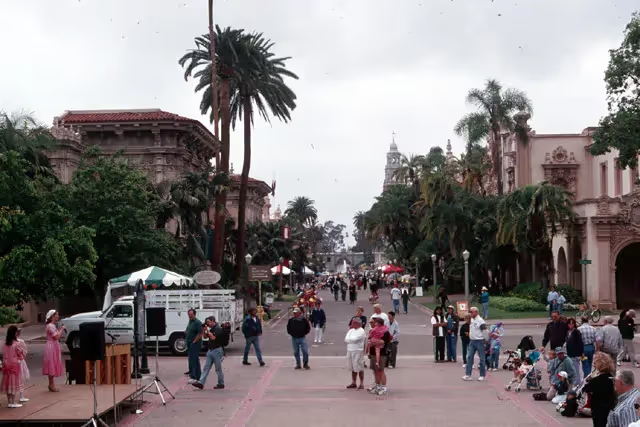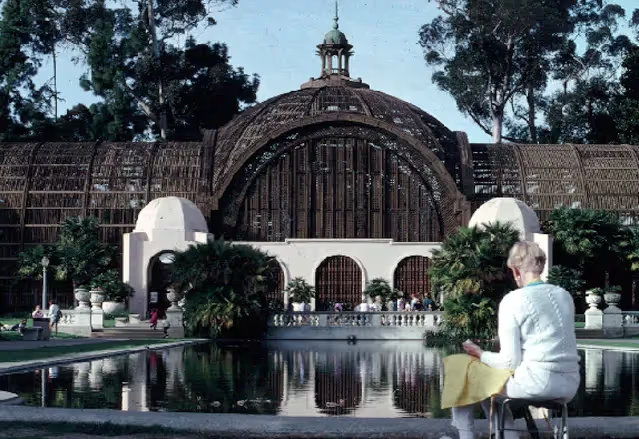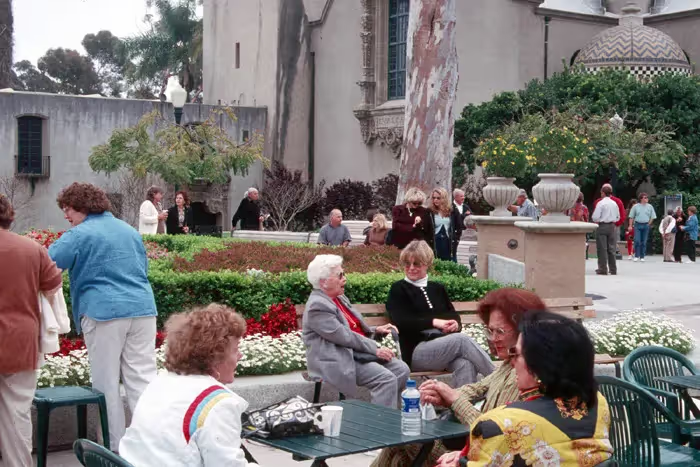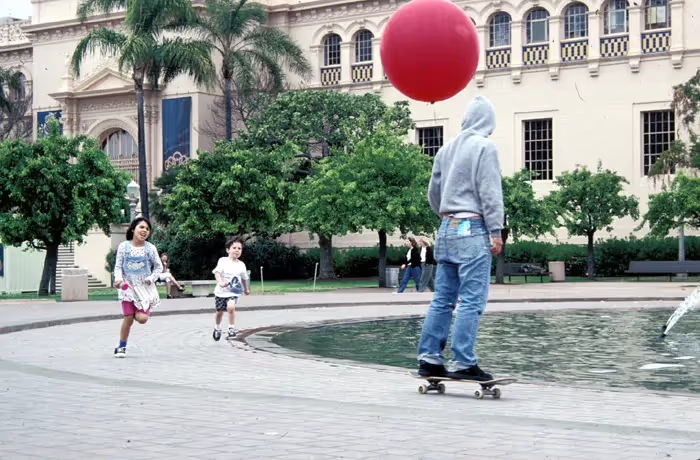A biweekly newsletter with public space news, resources, and opportunities.
A curated dispatch on all things public markets plus the latest announcements from the Market Cities Program.
Please note that these Hall of Shame nominations were written in a moment in time (most over a decade ago) and likely have since changed or even been transformed. If the above entry is now great, or still not so great, go ahead and comment below on how it has evolved or nominate it as a great place.

With a host of cultural institutions laid out among its 1,200 lushly planted acres, Balboa Park is known as the "cultural heart" of San Diego.

Laid out around a series of destinations, or "centers of activity," Balboa Park is organized around a system of internal paths leading to its cultural attractions. This makes it clear to people how to use the park and where to go. The major centers of activity are the El Prado area, which houses the majority of museums and theatres, and a hand-painted carousel from 1910. Numerous refreshment stands and eateries - such as Albert's Restaurant in the San Diego Zoo, named after a famous resident, Albert the Gorilla - are also located throughout the park. The House of Hospitality is a visitors' center with maps, event guides, and information on park tours.
San Diego's Park and Recreation Department owns and manages both the park and the buildings within it. Buildings are rented to institutions (e.g. museums, theater companies), which are responsible for programming and interior maintenance. The City provides exterior maintenance of buildings. A number of park advocacy groups also support the park: the Central Balboa Park Association, for instance, is an organization of the area' museums. Informal entertainment (i.e. juggling, musicians, fortune telling) is managed by the Parks and Recreation Department through a daily permit system.
Cultural and entertainment events take place throughout the year, ranging from weekly concerts on the world's largest outdoor pipe organ to astronomy classes and lectures; the Old Globe Theater and the Spreckels Organ Pavillion host concerts and plays; and there are also galleries and gardens, a children's puppet theatre and an OMNIMAX theater. Despite this wealth of activity, there's still plenty of room for more traditional park activities like sports and picnicking.
Standing out among the park's attractions is the legendary San Diego Zoo, whose entrance, marked by two 11-foot topiary elephants, is a popular meeting place. The zoo covers 100 acres and is home to 3,800 animals from 800 different species, but it's unique in that it also has a number of creative educational programs, including sleepover events.
The land that is now Balboa Park was set aside by the Board of Trustees of the City of San Diego in May 1868. At first the site was primarily a nature park used by garden groups, but in 1915, when San Diego entered the competition to host the Panama-California Exposition, the cultural aspect of the park began to evolve. Its buildings now house a variety of museums, including the Museum of Man, the Museum of Art, the Aerospace Museum, and the Automotive Museum.
The Zoo was founded in 1916 by Dr. Harry Wegeforth, and when San Diego hosted the California Pacific Exposition in 1935, new buildings were constructed that reflect Pueblo and Mayan architectural styles. Several buildings, including the Casa de Balboa, were influenced by Spanish Colonial architecture, and the Ford Building, an impressive Art Nouveau structure, was also built at this time.
During World Wars I and II, barracks and military headquarters were temporarily located in the park; after 1946, much of the damage done during those years was repaired. In 1960, a master plan for Balboa Park was created to continue the growth and development of the park. A new plan was adopted in 1989 to carry park improvements over the next 20 years - including the renovation of several popular structures from the 1915 exposition.





*Please note that these Hall of Shame nominations were written in a moment in time (most over a decade ago) and likely have since changed or even been transformed. If the above entry is now great, or still not so great, go ahead and comment below on how it has evolved or nominate it as a great place.